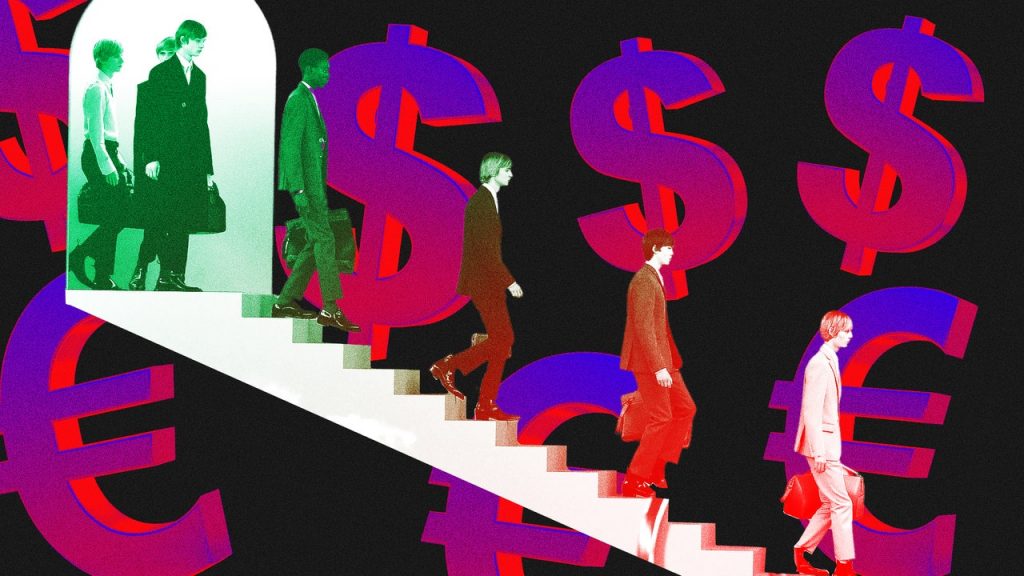
How Recessions Drive Innovation in Fashion
In a country where the economy seems to be hurtling toward a recession (unless it’s not), you might expect everything from housing costs to consumer behavior to be affected. And you might imagine that, in times of relative privation, spending time and attention and money on fashion would be one of the first expenses to be cut. But based on years of research on financial trends and spending habits, there’s a lot of evidence that suggests the most striking fashion trends are born from economic downturns.
In 1982, fashion writer John Duka outlined the way consumer habits changed during the economic recession of the early 1980s. The similarities to the current moment seem clear: unemployment hovered above 10 percent and oil prices soared, while real estate prices and retail sales plunged. Although we’ve seen an increase in retail spending in 2021 as consumers started revenge spending, we’re beginning to see retail sales drop. When retail spending slows down, it has a serious knock-on effect: companies can’t afford to produce, distribute, and employ workers. Those workers, in turn, wind up with less money in their pockets—and, to put a 2022 spin on it, wind up having to decide between paying rent or copping a new JJJJound drop.
But what’s true of retail spending broadly isn’t necessarily true in the world of fashion. Historically, upper-class buyers of high-end fashion don’t change their spending habits much, or even cool it on flaunting wealth during recessions. As Duka put it in 1982, “Retailers say those customers who can afford such expensive merchandise, although they too have become more selective, are still little affected by the vicissitudes of the economy.” On the other hand, buyers who shop less expensive designers usually halt spending—and restrict their purchases to either high-quality items to replace lost or damaged pieces or “exciting” pieces.
Some things don’t change: this “newness” is still a specific challenge to fashion designers today as we head into a recession. “[Designers] have to get consumers excited to buy, they have to present newness—a vibe shift—as the kids say,” says Allyson Rees, Senior Strategist at WGSN Insight.
Larger economic forces can shape these vibe shifts. As consumers adjust their personal style due to inflation or reduced materials, we see a pattern of new designs emerge.
In economically depressed post-WWII France, for example, Christian Dior released the “New Look,” featuring a cinched waist and wide shoulders—a new take on femininity. “After a period of fabric rationing, his designs used ample materials (like the Chérie dress, incorporating 80 yards of faille) which felt like a luxury,” says Veroniqué Hyland, Fashion Features Director at Elle and author of Dress Code. “Creating a new ‘It’ silhouette or item is also a way for the industry to spur people to buy new things, as opposed to being content with last season’s wardrobe.”
More recent recessions have brought their own novel forms of dressing. The 1980s brought bold neon colors, abstract prints, and the emergence of hip hop and punk fashion, while indie sleaze emerged in the years following the economic crisis of 2008. “When times are drab, maximalism seems to be the standard response,” said Hyland.